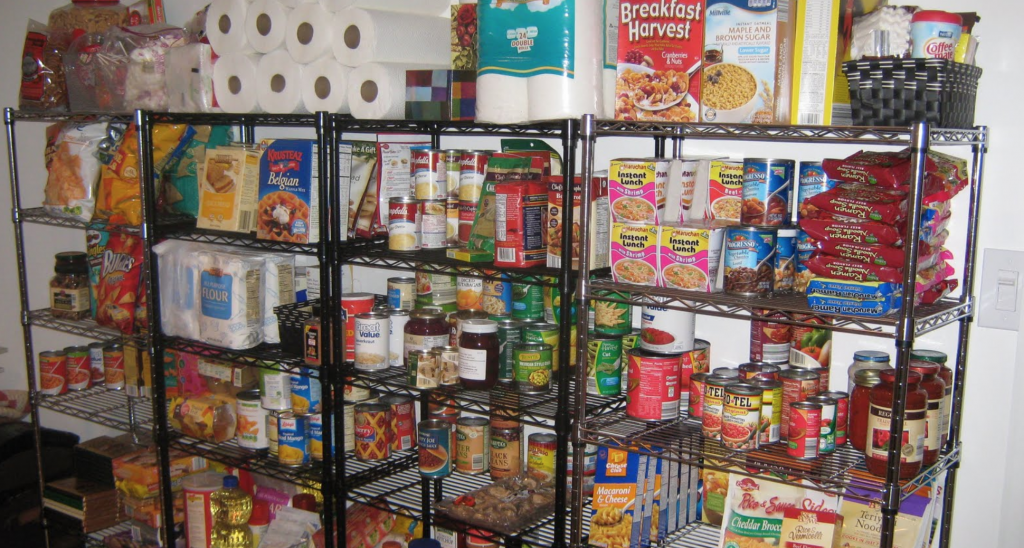There are wide-ranging opinions as to what items should be included in survival kits, and many of these are based on individual needs and preferences. However, the majority of 48-72 hour kits include items that most would agree are basic essentials. While you can customize your kits all you want, it’s important to make sure that you have these fundamental bases covered as well. Take a look at the guidelines below to see if your kit contains these minimal supplies.
Food
Do you have enough food for every person for at least three days? Does the food cover the daily caloric and nutritional needs of each person as well? Are items ready to eat without cooking? Are they fresh or nearing their expiration date? Do you have a can opener? These are just a few things to consider as you examine your short-term stockpile.
Water
A general rule of thumb is that each person will require at least a gallon of water per day for drinking, cooking and cleaning. In all reality, this may not be enough for a variety of reasons, so you should consider adding more to give yourself a little bit of a cushion. Your main supply should come from water that is already bottled and ready to drink, and you may also want to consider adding some purification tablets or a hand-filter in case you need to get extra water from a questionable source.
Light and Communication
Stock up on a couple of flashlights and headlamps, some candles, battery-powered lamps, waterproof matches and a couple of lighters. You should also have a battery-powered radio or one that can be charged with a hand crank. You may also want to consider including some battery packs for charging your phones, along with a whistle that you can use to call for help if necessary.
First Aid
You don’t necessarily need to build a trauma kit, but you should have some basic, everyday essentials stocked away. This includes bandages and band-aids, antibiotic ointment, over the counter medication, extra supplies of important prescriptions, tweezers, a scalpel, surgical scissors, latex gloves, face masks, protective sheets, gauze and cotton balls or swabs. Iodine, cold and hot packs, an Ace bandage, burn cream, antiseptic wipes, hydrogen peroxide, tape and eye drops should also be included in a minimal kit. It’s also important that you consider specific medical needs that each member of your family has in order to accommodate them as well.
Basic Tools
Include a wrench for shutting off gas and water lines if necessary, a shovel and axe, a can opener, utility knife, survival knife, duct tape, a crowbar, some good work gloves, face masks and some plastic sheeting. It also may be a good idea to have some rope that you can use for escape if necessary, some needles and thread, and a hammer.
Shelter
While you may not need to worry about shelter if you’re hunkering down at home, it’s important that you have some basic resources on hand in case you have to suddenly evacuate. Consider packing a tent, tarps, bedding, ponchos for everyone in your family, sleeping bags or blankets as well as hand or body warmers if it’s cold outside.
Sanitation
Have an extra 5 gallon container on hand to use as an improvised toilet, and consider using a piece of pool noodle as a seat in an emergency. You should also stock up on some garbage bags, toilet paper, hand sanitizer, no-rinse soap and shampoo, regular soap, extra washcloths and towels, disinfectant spray, bleach, toothpaste and toothbrush, sanitary napkins, hand wipes, air freshener, insect repellent, paper towels, tissues and some sunscreen if necessary.
Miscellaneous Items
Consider having some hose on hand to use as a siphon, a fire extinguisher or two, diapers, extra glasses or contacts, a good pair of shoes and additional clothing that is suitable for conditions at the time.
Remember that this is a minimal list, and you should modify or add to it based on your particular needs. Despite all of these items, plus the ones that you want to add, you should be able to fit everything into a few plastic containers with sturdy lids and store them in an out-of-the-way place.
Take some time to compare what you have on hand now with with these suggestions, and start filling in the gaps. The goal is to create a robust and useful kit that will tide you over until the dust settles and other options become available.
